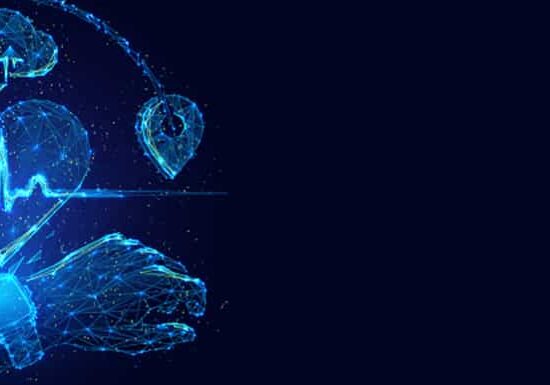Internet of Things (IoT) and the Expedited Adoption of Medical Wearables
Updated: June 19, 2024
Published: September 30, 2021

IoT, or the Internet of Things refers to physical devices that connect to the Internet and share data. These digital devices have inundated the world at relatively affordable price points because wireless networks are ubiquitous and computer chips can be made more cost-effectively than ever before. Any digital product can be considered IoT once it has the capability to connect to the Internet. These devices are reshaping how businesses operate, how people communicate, and how information is being shared. According to research conducted by Ericsson, the Internet of Things is growing at the hands of smart wearable technology. 74% of respondents believe that sensors and wearables allow for better communication with surrounding devices.
In the case of healthcare, wearable technology is reshaping a vital industry and enhancing patient care. Through the use of IoT and the sharing of big data, healthcare providers and patients have access to data that can be transformed into valuable insights. Data across IoT devices is made available in real-time and is being used in healthcare for decision-making and preventative medicine. Wearable devices are connected via the cloud, allowing for immediate data storage and processing. When paired with web-based or mobile applications, users within the healthcare field and wearers themselves can review their data on the spot and visually to access healthcare analytics.
According to Reportlinker’s “Wearable Technology market by Product, Type, Application, and Geography,” the wearable technology market is expected to reach $265.4 billion by 2026. Multiple factors are contributing to the expanding adoption of smart wearable devices, namely: the aging population, technological advancements in adjacent categories like machine learning and artificial reality, and the demand for smart living on behalf of users.
When it comes to the global wearable medical devices market specifically, home healthcare and remote patient monitoring devices will continue to spur growth in the sector. People are increasingly concerned with living a healthy lifestyle, which provides for great opportunity in the wearable medical devices space.
In 2020, wearable technology related to health and fitness boomed. Mobile apps and smart wearable devices have made it possible for people to better monitor and take control of their health key performance indicators, such as: the amount of steps they’ve taken in a day, the calories they’ve burned, and their heart rate, at any given moment in time. Additionally, vital signs like blood pressure, body temperature, blood oxygen saturation levels, and the like are being monitored for prevention and treatment.
People with and without medical conditions are rapidly adopting wearable devices to better track their health and wellness. The COVID-19 pandemic has also hastened this trend. A survey of over 8,000 adults in America reported that 43% own a wearable and over half of them (51%) use a wearable to oversee a specific health condition.
With the increasing adoption of medical wearables for disease management and prevention purposes, it’s of utmost importance to secure information, lessen costs, and focus on data accuracy. When it comes to healthcare, wearable technologies are providing innovative ways to prevent diseases and maintain health. The Association of American Medical Colleges reports that there will be a shortage of primary and specialty care physicians by 2034. As such, technology is stepping in to treat patients efficiently and even from afar.
Various technologies empower medical wearable devices to work. For example, the use of biometrics plays a key role to monitor the physiological parameters of the person wearing the device using light-based sensors. Since these devices can monitor a patient around the clock, healthcare providers can combine data from sleep patterns and vital signs to better understand any chronic illness or even to spot anomalies in the data.
Motion sensors are used in wearable devices to determine fall risk assessment, monitor the elderly, and review one’s exercise habits. Magnetometers, gyroscopes, and accelerometers all combined to obtain data in motion tracking. These connected devices provide real-time data and online processing is used to acquire, filter, and generate necessary data on demand. As more people utilize the technology, it will become possible for health care systems and providers to recognize widespread trends in geographic areas to provide medical responses quickly. To make this happen, there will need to be a convergence of consumer technology companies with medical device manufacturers.
The future of medical wearable devices accelerates alongside technological innovations. Rather than having to wear a physical device, wearable technology is being integrated into smart clothing with the use of sensors, flexible electricity cables, and low-power wireless communications to send and receive data directly from one’s body. The same can be said about connected footwear, in which people can wear shoes that have built-in gyroscopes, pressure sensors, and accelerometers to track step count, speed, and more. With each passing year, technology evolves and causes the cost of said technologies to drop. This chain reaction helps to achieve cost effectiveness. As such, both affordability and innovation will continue to play a role in driving forward the growth of IoT wearable devices, especially in the field of healthcare.
